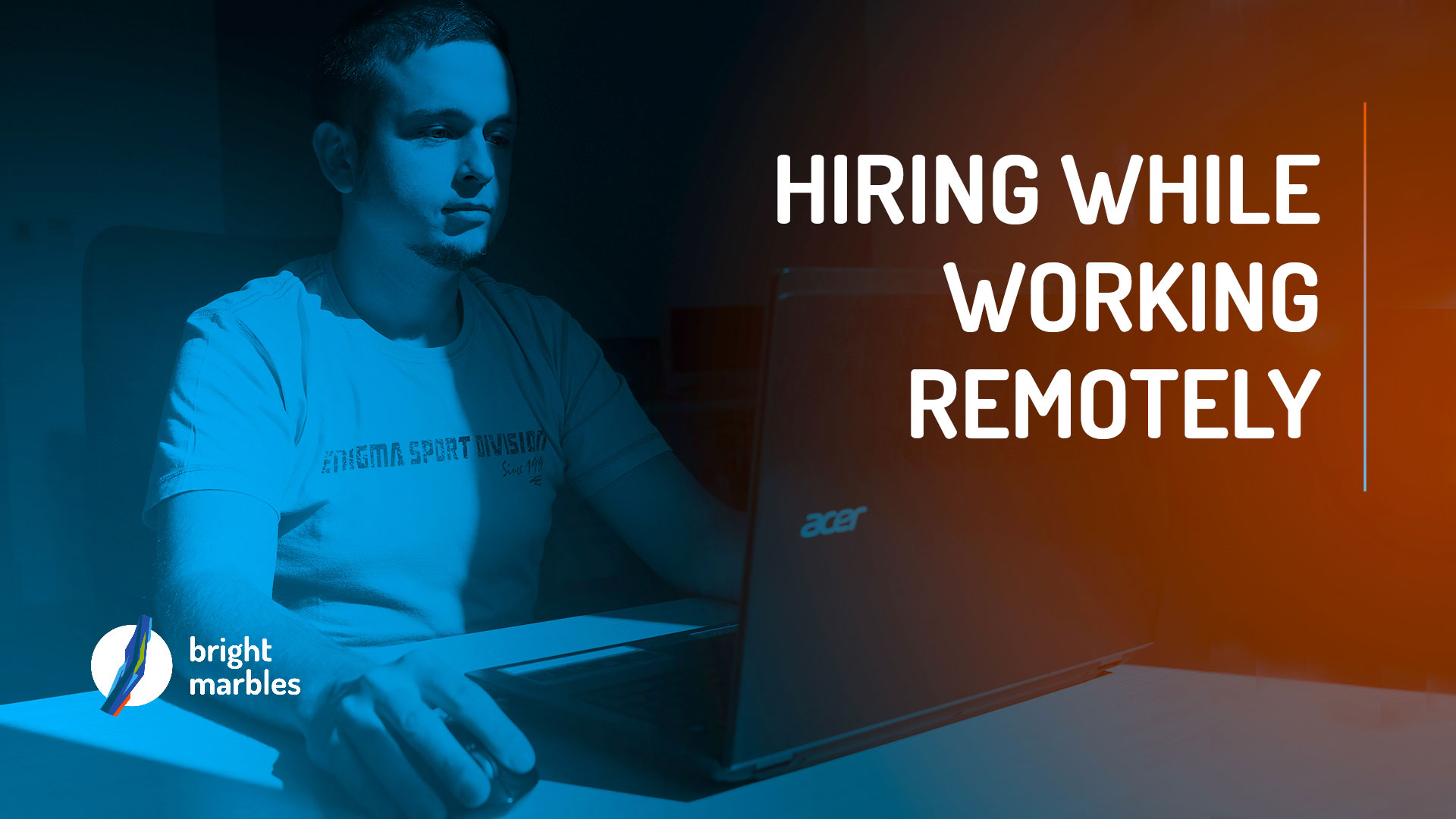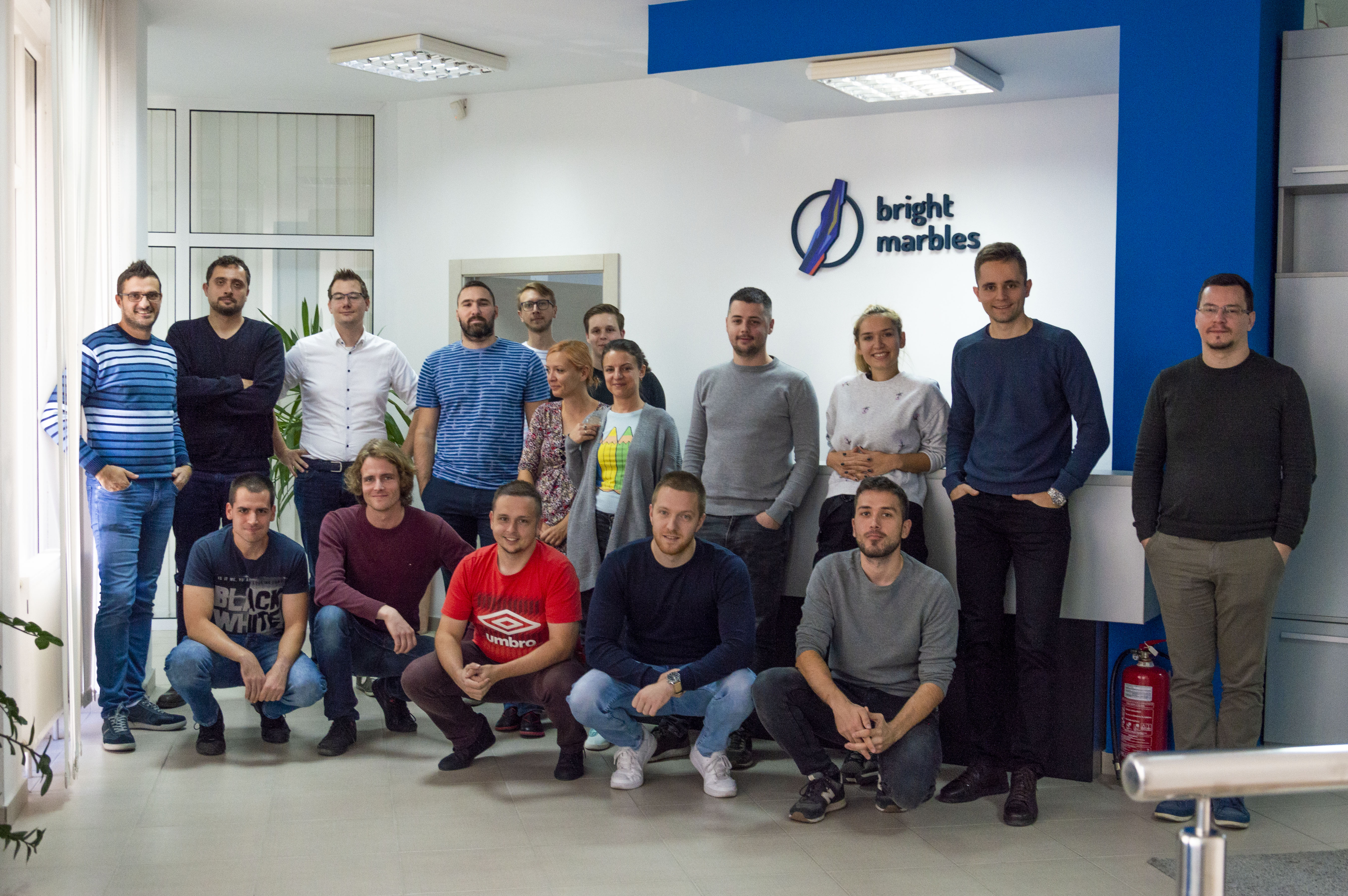Hiring Explained by Daniela | HR Manager
Hiring new employees represents a key process at BrightMarbles. A carefully planned process ensures that the team comprises the most passionate and fully engaged people who aspire to be the very best.

Daniela says:
We spend eight hours working with a team of people we need to rely on, trust they will do their tasks, and clearly and openly communicate with them. When it comes to selecting our new colleagues, we keep a close eye on the whole process and put extra effort into choosing the right teammates.
What “Right” means
Sharing our values is the first and foremost.
Ownership. We expect our future colleagues to be proactive when it comes to tasks and solving issues. When you do something, you work on it from start to end, and you’re done when the job is done. If there’s a problem, you’ll find a way to fix or pass it; you won’t quit. And even if this sounds like something you do on your own, we believe in teamwork. Calm, clear, and professional communication. Equal opportunities for personal development for all our people, and absolutely zero tolerance for discrimination. We want to create a safe environment for all our colleagues, for them to be able to reach their full potential.
Selecting our new members
When it comes to selecting our new team members, there are a few steps, but they depend on the position. To make things clearer, we will focus on the two busiest positions we fill – Software and Quality Engineer.
There is a bit of a difference in the selection process since we require different skills and traits necessary to do the job well. Let’s dive in!
Hiring Software Engineers
A software engineer is a person who is responsible for communication with the client, a team, and of course, for delivering a code of high quality, according to our internal quality guide.
We assess technical expertise and soft skills/personality traits such as assertive communication, honesty, flexibility, etc. The hiring process has a few steps and takes about 2-4 weeks.
Depending on your seniority level, you will start with a test, after which, if everything is alright, we’ll schedule a technical interview. We try to have two interviewers of similar technical backgrounds present, to preserve the objectivity of the interview. The next step is an HR interview, where we talk about previous experience and boring old HR topics. Throughout the whole process, every step has its purpose of assessing a candidate objectively on essential criteria. And of course, we will keep you posted about everything we do after every step.
Hiring Quality Consultants
The next position we often hire is Quality Consultant or Test Engineer.
QA fills a special place in our hearts. They are in the first row when it comes to communication with a client. They ensure that our clients are satisfied with what we’ve delivered. Not only code and product, but also the whole experience of collaboration and mutual communication. So, as you can imagine, this is a crucial role for us.
With this role, we skip the technical test and go straight to the technical interview to assess a candidate’s technical knowledge. The next in line is the HR interview, where we focus on a few different traits and skills.
Reach out
Whatever or whenever you need more information about the process, you can always reach our People Operations manager, and she will be glad to answer the questions: daniela.cerveni@brightmarbles.io.
Feel free to look around our open positions.























Comments16
Lorem ipsum dolor sit amet, consectetur adipisicing elit. Ipsa iste inventore rem Community Guidelines.
by Simon & Garfunkel
by Simon & Garfunkel
by Simon & Garfunkel
by Simon & Garfunkel